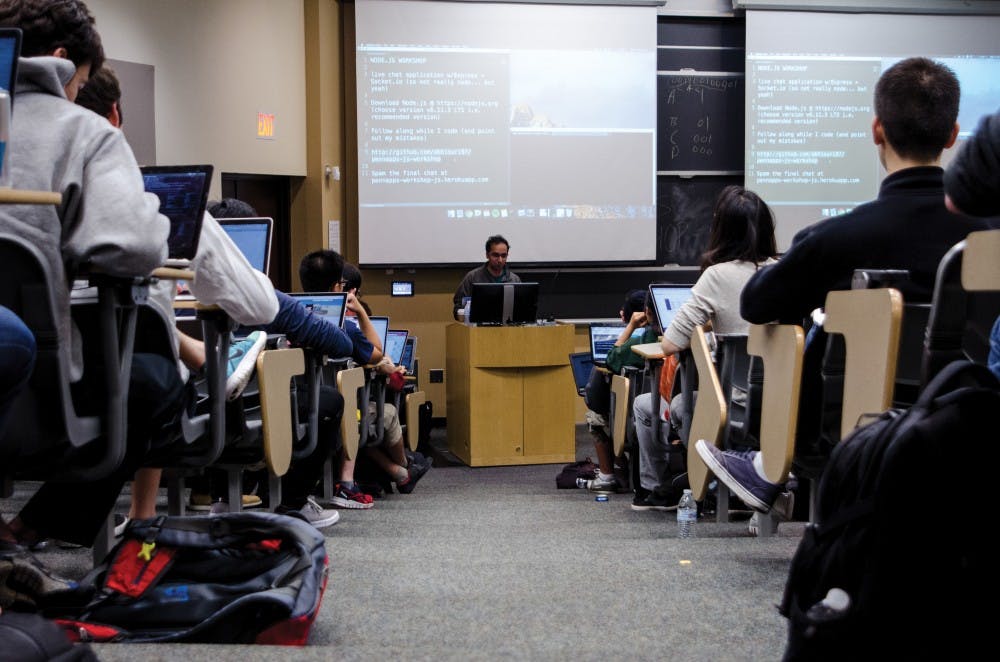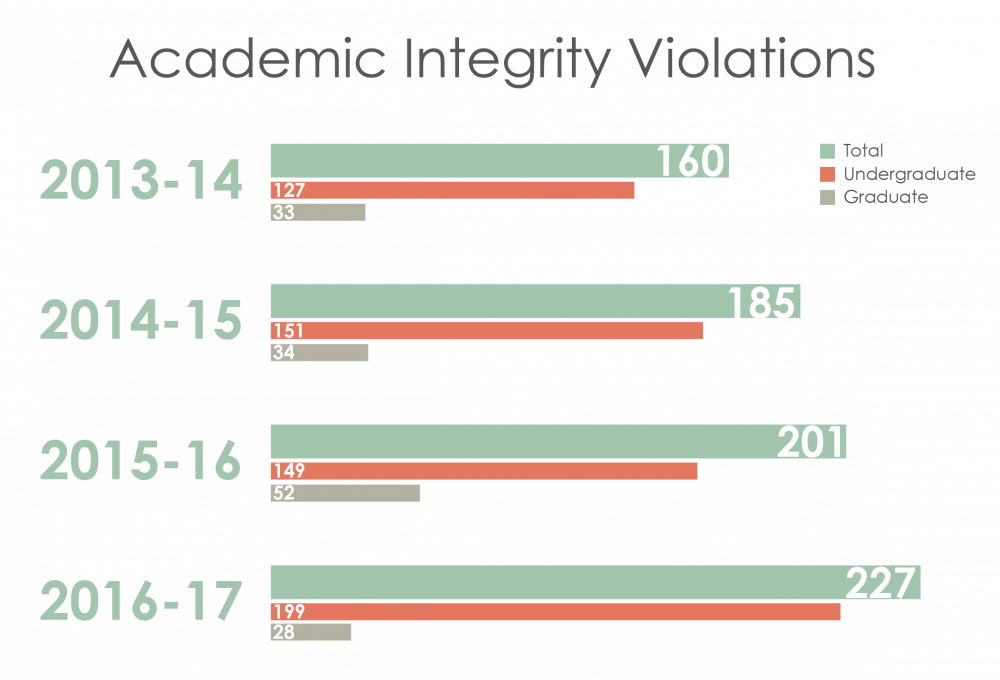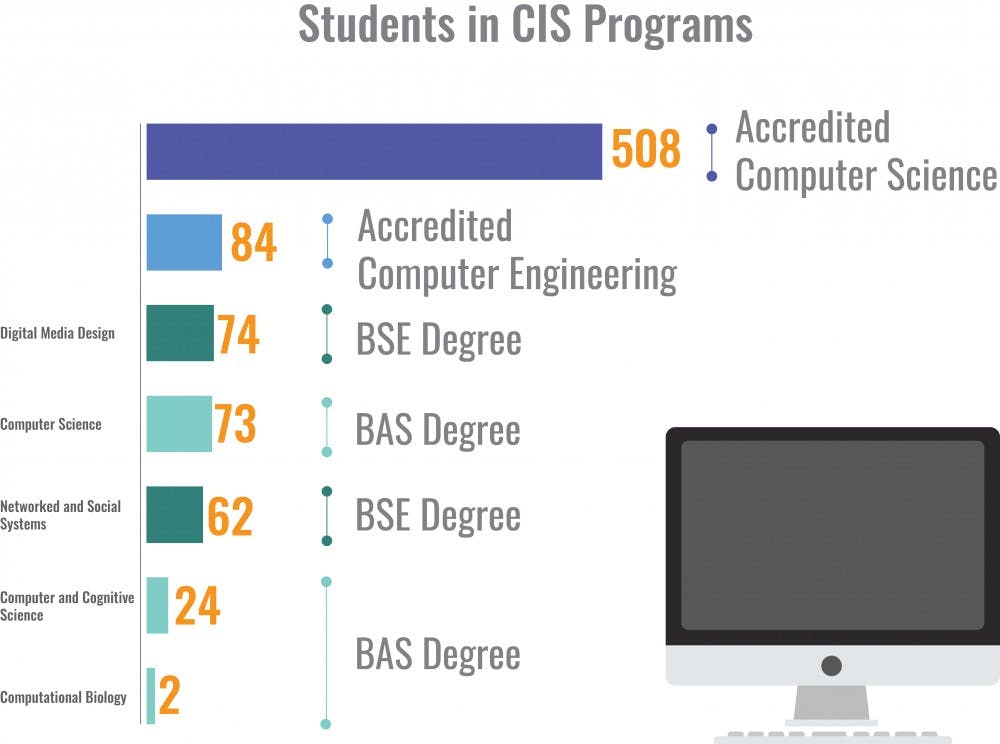
Almost half the cases of academic dishonesty sent to the Office of Student Conduct come from the Department of Computer and Information Science at Penn — but this is because students are more likely to get caught cheating in these classes.
Forty-five percent of reported cases of academic dishonesty came from the introductory level classes of the CIS department — particularly CIS 110: "Introduction to Computer Program," according to data from 2013-2014. For many students and faculty, this high number is reflective of the sophistication of the plagiarism-checking software used and the sheer size of the classes in question.
CIS professor Chris Callison-Burch said it is important to understand that students in CIS classes are not more inclined to plagiarize or cheat.
“It’s not necessarily the case that academic integrity violations are more common in computer science than elsewhere," Callison-Burch said. "It’s probably just the case that we have better tools or the fact that we’re using software that makes it easier to spot them.”
Students taking CIS classes are required to submit all assignments online. All of their work is processed through a plagiarism detection software that compares minute details of their code to that of others in their class and that of students who have taken the class previously.
“It detects many types of transformations that students might apply to try to obfuscate the fact that they had copied from someone else,” Callison-Burch elaborated. “Like, we have variable names, and if they replaced all the variable names with different names, the plagiarism detection still flags it.”
If the software detects a larger percentage of similarity between two pieces of code than the threshold set by the professor for an individual course, the incident is immediately reported to OSC for review.
Callison-Burch added that issues of academic integrity also stem from the fact that CIS is a collaborative discipline, especially in professional environments. The distinction between collaboration with other students and outright plagiarism can sometimes be unclear for students.

Based on the 2016-2017 report released by OSC, cheating has increased by 161 percent since 2013. But reports of unauthorized collaboration, a category within the report that presumably would cover cases of academic dishonesty in CIS classes actually decreased from 2015-2016 to 2016-2017, from 105 to 95 case investigations.
Director of OSC Julie Lyzinski said in an emailed statement that her organization and the CIS department at Penn are collaborating closely to help to reduce the number of referred cases from CIS classes caused by a student’s lack of understanding of what is and is not permitted.
In an attempt to provide clarification for what would constitute a violation of academic integrity in a CIS class, the department provides a comprehensive “Collaboration Policy” on the class’ course website that details practices that are encouraged and mandated for students.
For example, students are required to submit a “help log” that explains what help they received and whom they received help from. This even extends to assistance from teaching assistants during office hours. Students are also disallowed from showing their code to anyone other than professors and TAs, even if the person in question is not in a CIS class.

Wharton freshman Gabriel Lozano, who is currently taking CIS 110, said that while this approach to the course may appear intense, it has not detracted from his learning experience.
“Right from the get-go, they establish that you have to follow their format of citing and how you’re supposed to ask for help," Lozano said. "Sure, in the beginning it seemed a little excessive, but once you go with the flow, it hasn’t hindered my experience."
College senior and CIS 110 Head TA Isabel Gwara said sometimes students are even given assignments to help further their understanding of the implications of academic dishonestly in the CIS department.
“There’s a near 100 percent chance that you will be caught,” Gwara said. “In past semesters we’ve actually had students write a basic cheat checker so that they can see how easy it is to determine how similar things are.”
Many students support the CIS department's methods for preventing and detecting plagiarism, saying that while collaboration is encouraged in careers involving CIS, it is not beneficial in educational environments.
“There are multiple ways to approach it, and the purpose of removing collaboration in these classes is to ensure that these students really learn their own method [and] develop their own method of coding,” Wharton and Engineering junior Gabriel Ruimy said.
Engineering senior and CIS 110 Head TA Rohan Bhide cited the large number of students taking introductory CIS classes as the main reason why almost half of all cases of academic dishonesty sent to OSC originate from the CIS department.
Wharton senior Chris Motz added that he has noticed other schools recognizing the importance of CIS and looking to include some form of computer programming within their own curriculum.
“It’s definitely becoming more applicable to different fields. Trading is now dominated by people who can code,” Motz said. “Even Wharton is waking up to that. They’ve started a business analytics concentration.”
The Daily Pennsylvanian is an independent, student-run newspaper. Please consider making a donation to support the coverage that shapes the University. Your generosity ensures a future of strong journalism at Penn.
Donate



